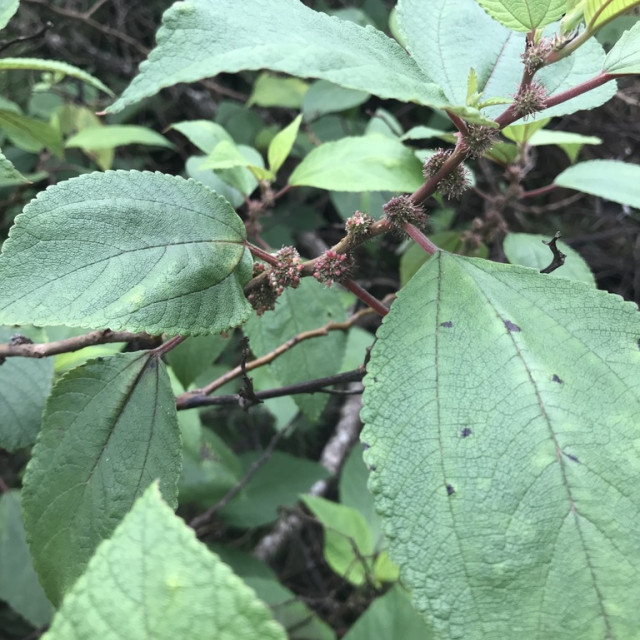COMMON NAME
Mamaki
SCIENTIFIC NAME
Pipturus albidus
ALSO KNOWN AS
Waimea pipturus
Plant family
Nettle (Urticaceae)
Plant group
Broadleaf Evergreens
A tree/shrub up to 30' tall, with a trunk diameter of up to 1'.
3 reports
3+
OBSERVERS
3+
OBSERVATIONS
Identification hints
Mamaki can vary highly in leaf shape and size, plant size and growth form--this plant has previously been split up into as many as ten species!
Did you know?
Mamaki trees and shrubs grow in wet forested areas. The bark fibers have been used to make cloth and rope. The fruits and leaves have been used for medicinal purposes and the leaves are dried and sold today commercially. Mamaki trees are used in landscaping and are the host plant for the Kamehameha butterfly caterpillars and sometimes the Green Hawaiian Blue butterfly.
DISTRIBUTION IN TH U.S.
Hawaii
HABITAT
Growing in moist to wet forests from sea level to 6,000' above sea level.
ATTRIBUTES
Leaves
The leaves are dark green above and whitish below. The leaves are highly variable in size and shape, from 3 to 8 inches long, oblong to heart shaped, with reddish veins and toothed edges. They vary in texture from leathery to papery.
Flowers
White to greenish flowers are extremely small, growing in the leaf axils in tight 3/8" wide clusters. The male and female flowers grow separately but on the same plant (unisexual flowers).
Fruits
The fruits are small, white berries with pale brown, oval seeds.
Bark
The bark is gray to reddish-brown in color.
Bloom Time
Blooming throughout the year.
See Menu
- 2021 Chicago Botanic Garden. All Rights Reserved.
-
Creative Commons
BY-NC-SA 4.0 - Terms of Use
- Privacy Policy
- Data Sharing and Citation Policies
- 2021 Chicago Botanic Garden. All Rights Reserved.



